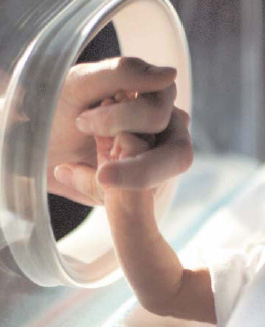During my zookeeping and environmental education career, I have interacted and worked with a variety of animals, including brown bears, wolverines, red foxes, moose, camels, mountain goats, dolphins, sea lions, raccoons, porcupines, snakes, raptors and ravens. I am also a young adult author, and my debut novel ESSENCE was released in June 2014 by Strange Chemistry Books. Ask me anything!
I'm not certain I know how to accurately answer this question, as each animal is typically owned by the zoo from which it escapes--with a few exceptions for breeding loans, etc. Also, each animal is generally apprehended before too much time passes, so it is almost never necessary to report an escape to an outside owner.
If, for some reason, a breeder loan animal (or other outside animal) either went missing or was forced to be put down during an escape, there would typically be a clause in that animal's loan contract that would detail how the receiving zoo would respond to this--whether it is a no-fault situation, a situation where a replacement animal would need to be acquired, etc.
(Again, this happens to infrequently that it's almost never necessary to actually deal with it. Even still, I suppose it's better to be safe than sorry.)
Hi Laura! Most for-profit organizations are not allowed to have volunteers, so your best bet would be to look for a non-profit zoo/aquarium in the Orlando area. Off the top of my head, I know the Central Florida Zoo & Botanical Gardens in Sanford accepts volunteers. I would recommend visiiting their website to see what their specific requirements are. Best of luck to you!
Hi Chris! Wolves are interesting mammals, as they are relatively monogamous within their pack structure. Females only go into heat once a year, and this typically lasts a few weeks. During this time, the female and her chosen male will often mate several times, and they will also spend most of their non-mating time together. Once mating season is over, the female wolf will turn much of her attention to her pregnancy--and to preparing a den for her litter's arrival.
Great question, CAT! Primate enrichment programs—like any other animal enrichment programs—are designed to enhance a particular animal’s behavioral, physical, social, cognitive and psychological well being. Enrichment is of particular importance to very complex animals like primates, because they require a great deal of physical, mental and social stimulation.
The first step in designing an enrichment program for a primate is to research that species’ natural behaviors and physiology. Once you have a handle on what the animal “likes to do,” the next step is to design a goal-oriented plan that identifies the species-specific behaviors are desired from that animal (digging, nesting, etc.).
In the case of large primates, structural enrichment and object enrichment are used quite often in enrichment plans. Artificial trees, platforms, hammocks, hoses and rope provide opportunities for decision making—and so do novel items like crates, balls, food items, barrels, burlap sacks, boxes, etc.
It is important to provide enrichment items at variable intervals to prevent animal boredom. It is also important to provide social enrichment in the form of companionship with other animals, training sessions and bonding time with trainers.
Enrichment plans must include how the enrichment will be developed, how it will ensure the animal’s safety, and how it will be monitored to document the animal’s response to it. (Interns and/or volunteers usually do the majority of monitoring.)
Understanding that many animals often require a “breaking in period” where they size up new additions to their environment, trainers should make sure to keep detailed records to ensure the animal eventually utilizes and is stimulated by the enrichment provided.
Hope this helps!
Pharmacist
 Have you ever given someone the wrong prescription?
Have you ever given someone the wrong prescription?
Hollywood Executive Assistant
 Are Hollywood execs as nightmarish as depicted on TV?
Are Hollywood execs as nightmarish as depicted on TV?
Nurse Practitioner
 Could a nurse practitioner do the job of a primary care physician?
Could a nurse practitioner do the job of a primary care physician?
Hi again, Bulldogs! It often takes an animal a little while to adjust to its new environment, so zookeepers are very patient. They also take great care to make the environment as "interesting" as possible so the animal has many opportunities for mental and physical stimulation.
If it seems like an animal isn't responding well to its environment, they will work hard to adapt their behavioral management plans to provide new opportunities for the animal. They may even combine certain species together (if possible) to provide companionship if the animal is the only one of its kind.
If these methods still don't work, zoos may begin to consider transferring the animal to another facility where they think it may be more successful. They won't rest until they find a solution!
This obviously varies quite a bit from animal to animal, but our typical tools of the trade are treats, kennels, hand nets of various sizes, animal control nets, mesh nets, poles, squeeze cages, fog horns, fire extinguishers, tranquilizer darts, and even firearms for the most serious circumstances.
Hi Acelest, and thanks for such a great question. I need to be honest with you: I have questioned zookeeping as a career many times, and the reason has always come down to the salary. As a matter of fact, in recent years I have been forced to shift my focus away from the animals and more onto the management side of things. This has been a 100% financial decision.
It is an incredible shame, because zookeeping really is my dream job, but at the end of the day, almost every zookeeper I know either works two jobs or is partially supported by someone else. The reason is two-fold: the career is extremely competitive, so if you aren't willing to accept such a low salary, there are hundreds of people in line just behind you who will. Also, there is an abundance of entry-level jobs, but it is very hard to work your way up into a management position, because of the bottleneck of available talent vs. very few openings.
That being said, if zookeeping is your dream, I would encourage you without hesitation to go for it. I have never once regretted my decision to become a zookeeper, and I would not be the person I am today if not for the experiences I have had in this career field.
-OR-
 Login with Facebook
Login with Facebook (max 20 characters - letters, numbers, and underscores only. Note that your username is private, and you have the option to choose an alias when asking questions or hosting a Q&A.)
(A valid e-mail address is required. Your e-mail will not be shared with anyone.)
(min 5 characters)
By checking this box, you acknowledge that you have read and agree to Jobstr.com’s Terms and Privacy Policy.
-OR-
 Register with Facebook
Register with Facebook(Don't worry: you'll be able to choose an alias when asking questions or hosting a Q&A.)